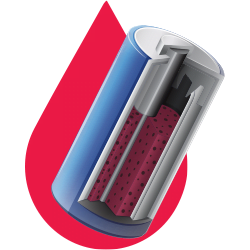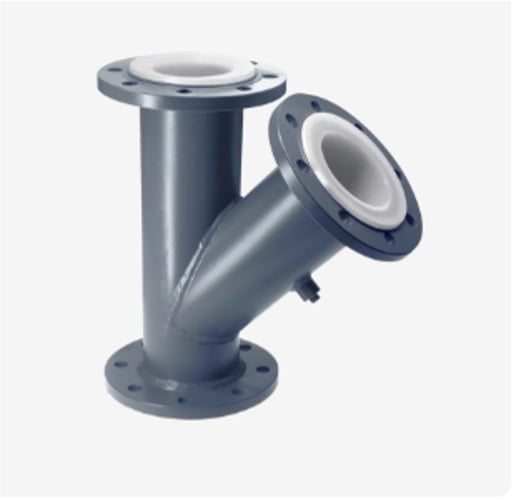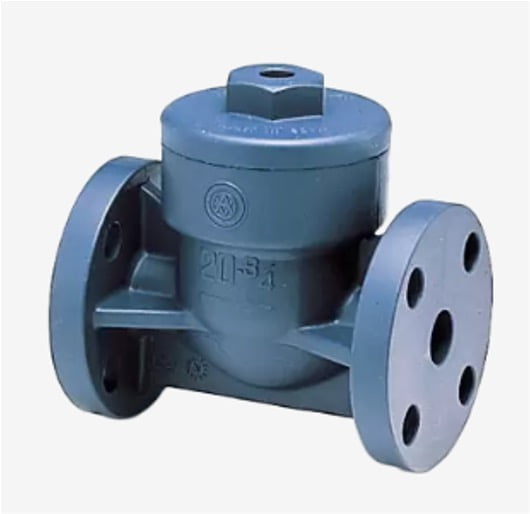The key material in the manufacture of lithium-ion batteries
Battery production is increasing in Scandinavia and new battery factories are opening in several places. As the demand for batteries increases, so do the requirements for safe flows in production. By choosing the right material for the right application, the process can be optimised and become both faster and safer. Lyma guides!
In recent years, battery production has really taken off in Scandinavia. Thanks to a large supply of green electricity and good transport possibilities, several large battery producers have chosen to locate their production in the Nordic region. In Sweden, we find, among others, the well-known company Northvoltwhose new factory in Skellefteå is expected to produce one million lithium-ion batteries per year.
 The choice of materials is important
The choice of materials is important
It is important to remember that the manufacture of batteries places high demands on the materials used in production applications. For the different battery components to achieve the best performance, it is important that they are of high purity. A large amount of acids and bases are used to purify and separate the incoming ore. In the past, metal tubes such as high-alloy steel or titanium were often used, but due to today's long delivery times and high costs, this is rarely an option for manufacturers.
Plastic in pipes and tanks

Lateral T-pipe with PTFE plastic lining. The white media contacting parts protect against corrosion.
Instead, plastic may be a preferred material. A material that is both cheaper and has a much shorter delivery time. The use of plasticlaser fibre reinforced thermoset pipes (GAP) or coiled metal tubes, for example, can be a good option. GAP pipes are optimal for use at lower temperatures and have long been used in the chemical and paper industries due to their good chemical resistance. At higher temperatures (up to 200 °C), however, the lined pipes in PTFE preferable. This type of pipe can be used to transport acids such as HCl, H2SO4, HF.
Just as plastic is used in pipes, it can also be used in chemical tanks. Tanks can be made of glass fibre or plastic only, or a combination of both (e.g. glass fibre and plastic). PTFE wound fibreglass tank). Chimneys and scrubber systems can also consist of GAP to better manage corrosive flue gases, for example.
Plastic centrifugal pumps
Even the pumps used in battery manufacturing need to be able to handle large quantities of acids. Centrifugal pumps has a good efficiency, while a metal pump that corrodes is unusable. To avoid both high prices and long delivery times, a plastic pump can be used instead. In simpler applications, the entire pump can be made of plastic and in cases where higher lift or flow is needed, the pump housing can be made of cast iron while all media contacting parts are made of plastic.
The plastic is chosen based on what is to be pumped, for example high molecular weight polyethylene (HDPE) has excellent wear and corrosion properties. If the temperature is too high, more noble plastics such as PVDF or PAF are chosen instead. An advantage of the plastic impeller and inner tube is that the risk of contamination of the medium is reduced.
If the medium to be pumped is hazardous to health, a magnetic drive centrifugal pump the best option. The impeller is then coupled with a magnet which makes the pump leak-proof. One limitation of a magnetic drive pump is the amount of particles in the medium. If the medium contains a lot of particles, they risk getting stuck between the magnet and the impeller, which quickly wears down the pump.
Piston diaphragm pump for slurry handling
A battery manufacturing process always generates battery slurry, which in turn needs to be pumped. When pumping the battery slurry, particles and viscosity can increase, and to cope with this, a piston diaphragm pump an option that provides good performance and gentle handling. These pumps can handle very high pressure classes and are dry run safe. A pulsation damper is required to achieve a pulsation-free flow. Again, the fluid contacting parts are chosen depending on the media to be pumped. A piston diaphragm pump also works well for filter press feeding.
Learn more about which products are suitable for handling slurry.
Valves and accessories in the same material
A pump and pipework system works best if there is a compensator to eliminate vibrations in the system. If the system consists of plastic pipes and plastic pumps, it is obviously appropriate to have valves and compensators in the same material. If winding pipes are used, a compensator in PVDF is chosen instead, and for fibreglass pipes, a compensator in EPDM is often sufficient.
The plastic valves available today are of very high quality and are made of PVC, PP or PVDF. The chemical corrosion properties are excellent and can be used up to 100°C. If the temperatures are higher, it works here, just as in the pumps, that the metal housing and all parts in contact with the medium are made of suitable plastic. If abrasive slurry is to be handled, a hose valve may be the best option. Just with the same thinking, most things can be manufactured in plastic. Heat exchangers, agitators, gratings and devices that can withstand aggressive media or a difficult environment that creates corrosion.
Lyma helps you
We at Lyma have over 40 years of experience with corrosive and abrasive fluids and can help you make the right material choices for your applications. In recent times, we have worked with several battery manufacturers and good insight into the growing industry.
At Lyma, we have been working with corrosive liquids for over 40 years. We have extensive experience in material selection and can help you to more easily combine the right material for your liquid.



